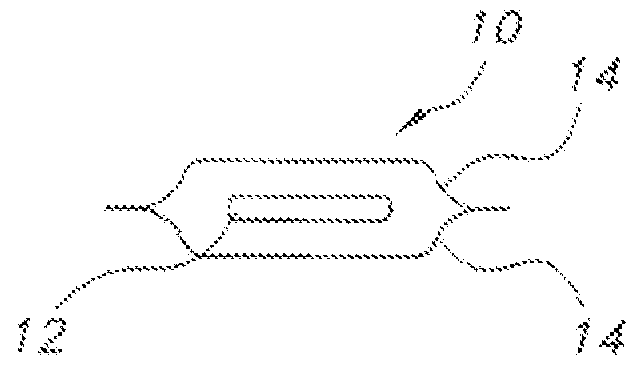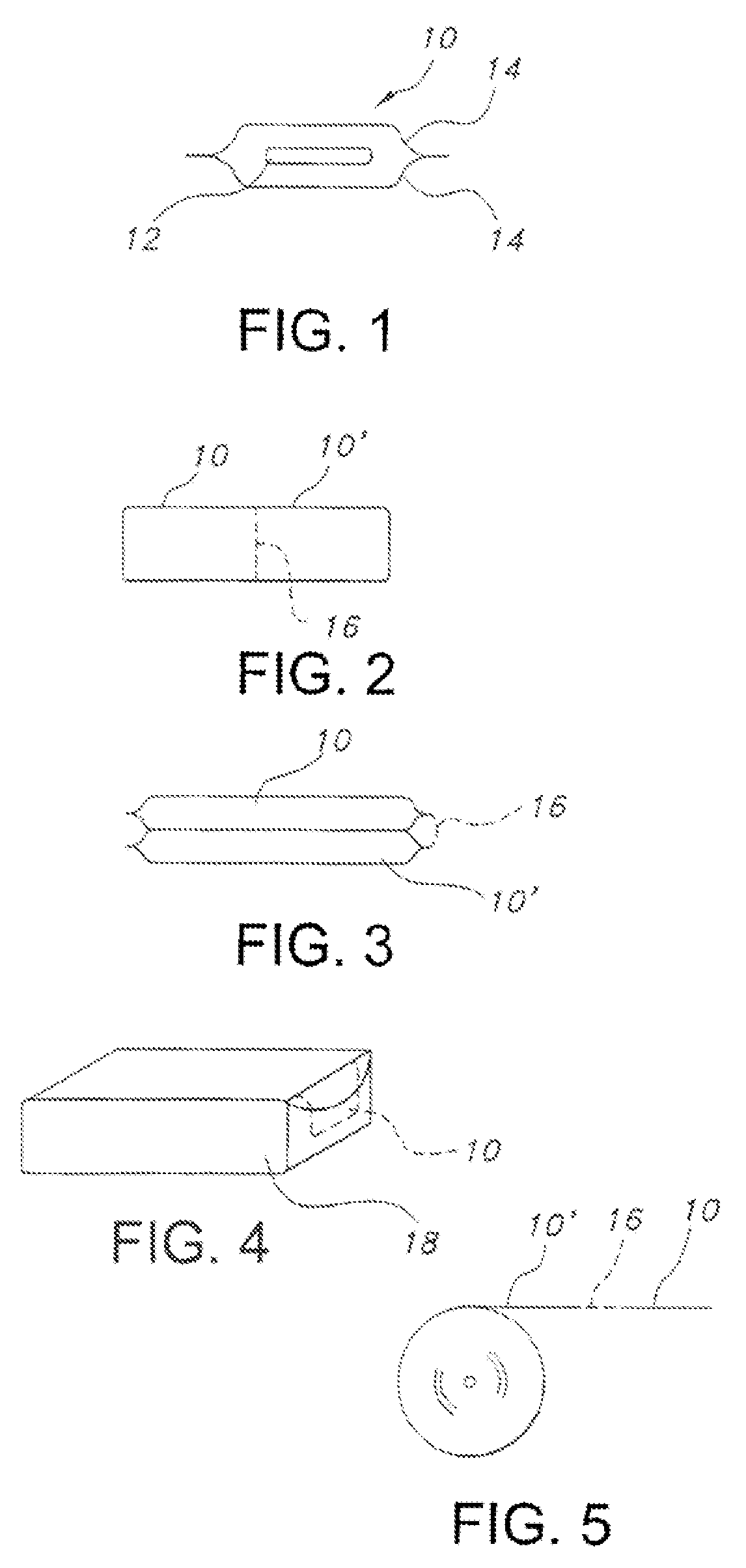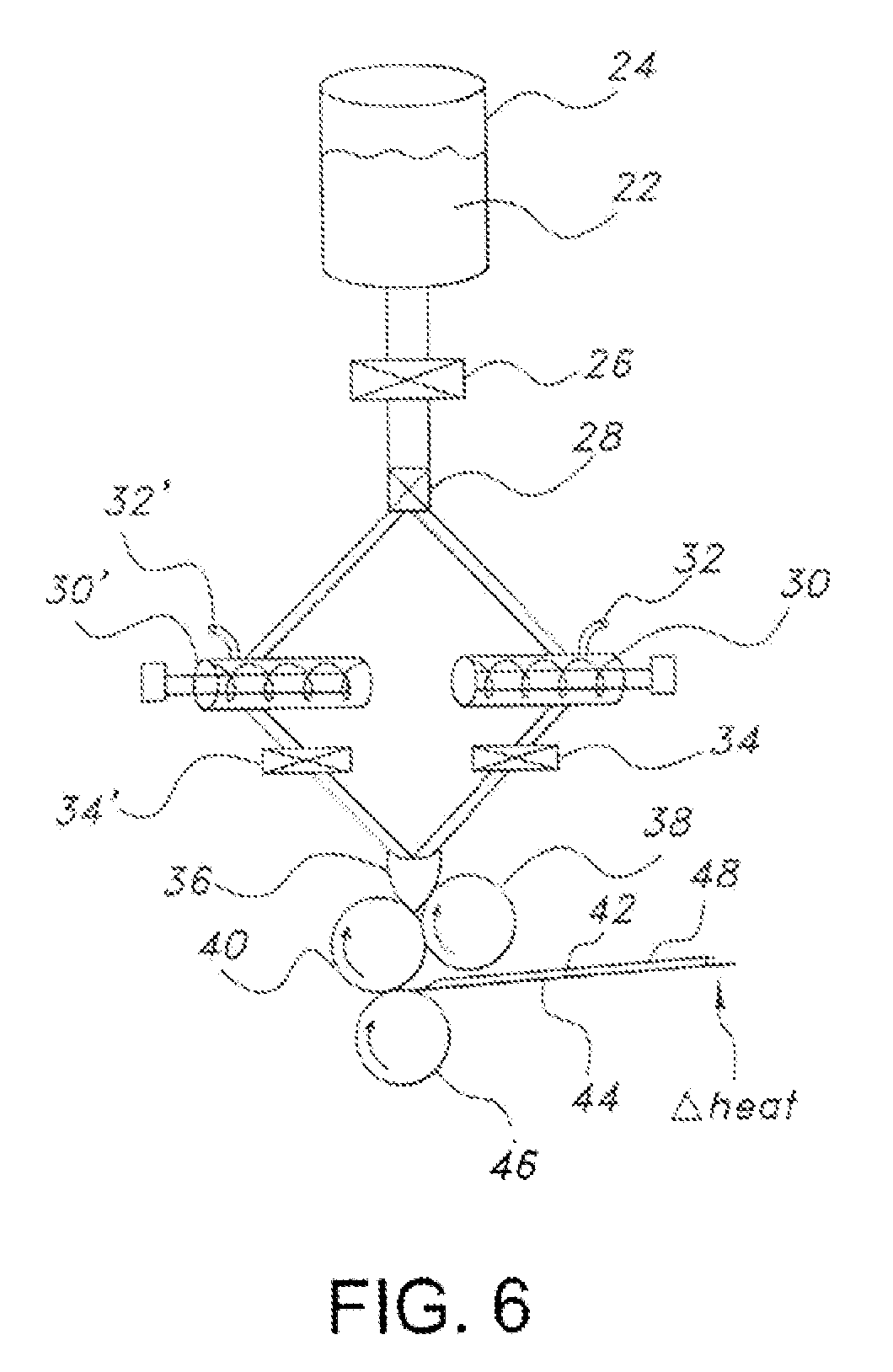Edible Water-Soluble Film Containing a Foam Reducing Flavoring Agent
a foam reduction and flavoring agent technology, applied in the field of edible water-soluble films, can solve the problems of large differences in the amount of active per film, inability to achieve a high degree of accuracy with respect to the effect of the active, and inherently non-uniformity
- Summary
- Abstract
- Description
- Claims
- Application Information
AI Technical Summary
Benefits of technology
Problems solved by technology
Method used
Image
Examples
example 1
[0197]Water-soluble film compositions were prepared using the components set forth in Table 1. The use of low levels of flavors as defoamers in the water-soluble film compositions was evaluated.
TABLE 1ComponentNumberAmountWeight %Component1.24.47 g 21.96%Polyethylene oxide2.13.73 g 10.98%Hydroxypropyl methylcellulose(15 cps)3.18.50 g 14.79%Polydextrose4.3.13 g 2.5%Sucralose15.0.63 g 0.5%Mono-ammoniumglycyrrhizinate26.1.25 g 1%Sodium bicarbonate7.2.28 g 1.82%Magnesium stearate8.0.63 g 0.5%Hydrophilic titanium dioxide9.232.31 g Distilled water1Commercially available from McNeil Nutrition2Commercially available as Magna Sweet 100 from Mafco Worldwide Corp.
[0198]Components 8 and 9 were placed in a Degussa 1300 bowl. The components were then processed as described below using the Degussa Dental Multivac Compact.
12 minutesstirring = 500 rpmvac. = 0% 4 minutesstirring = 150 rpmvac. = 0% after added a blend ofingredients 1, 2, 3, 4, 5, 6 & 7 1 minutestirring = 100 rpmvac. = 0%
[0199]The re...
example 2
[0209]Water-soluble film compositions were prepared using the components set forth in Table 2. The efficacy of a foam reducing flavoring agent was compared to conventional defoaming agents.
TABLE 2ComponentNumberAmountWeight %Component1.27.47 g 21.96%Polyethylene oxide2.13.73 g 10.98%Hydroxypropyl methylcellulose(15 cps)3.18.50 g 14.79%Polydextrose4.3.13 g 2.5%Sucralose ® (McNeilNutritionals)5.0.63 g 0.5%Mono-ammoniumglycyrrhizinate36.1.25 g 1%Sodium bicarbonate7.2.28 g 1.82%Magnesium stearate8.0.63 g 0.5%Hydrophilic titanium dioxide9.232.31 g Distilled Water3Commercially available as Magna Sweet 100 from Mafco Worldwide Corp.
[0210]Ingredients 8 and 9 was placed in a bowl and processed as described below using the Degussa Dental Multivac Compact.
8 minutesstirring = 500 rpmvac. = 0% (using A310 impeller)5 minutesstirring = 100 rpmvac. = 0% (using gate impeller)after added a blend of ingredients1, 2, 3, 4, 5, 6 & 7
[0211]The resulting solution was foamy. 20 g of the foamy solution wer...
example 3
[0222]An edible water-soluble film containing dextromethorphan HBr (Dx) as an active ingredient was prepared using 1% cherry flavor as a defoaming agent. (92.3 mg strip contains ˜15 mg Dx) (35% solids) The components used to form the film are set forth in Table 3.
TABLE 3ComponentNumberAmountWeight %Component1.3.84 g21.96% Polyethylene oxide2.1.92 g10.98% Hydroxypropyl methylcellulose(15 cps)3.2.59 g14.79Polydextrose4.0.44 g2.5%Sucralose ® (McNeil Nutritionals)5.0.09 g0.5%Mono-ammonium glycyrrhizinate46.0.17 g 1%Sodium bicarbonate7.0.32 g1.82% Magnesium stearate8.5.47 g31.25% Dx (52% w / w) 640A 040702W101-01 (Coating Place, Inc.)9.2.29 g13.05% Vicks ® Cough Drop CherryType Fl. AN145163 (Noville)10.0.017 g 0.1%Butylated hydroxytoluene(Spectrum Chemicals)11.0.079 g 0.45% Cyclohexanecarboximide512.0.17 g 1%Vicks ® Cough Drop CherryType Fl. AN145163 (Noville)13.0.017 g 0.1%FD&C Red #4014.0.09 g0.5%Hydrophilic titanium dioxide15.32.5 gDistilled water4Commercially available as Magna Sweet...
PUM
 Login to View More
Login to View More Abstract
Description
Claims
Application Information
 Login to View More
Login to View More - R&D
- Intellectual Property
- Life Sciences
- Materials
- Tech Scout
- Unparalleled Data Quality
- Higher Quality Content
- 60% Fewer Hallucinations
Browse by: Latest US Patents, China's latest patents, Technical Efficacy Thesaurus, Application Domain, Technology Topic, Popular Technical Reports.
© 2025 PatSnap. All rights reserved.Legal|Privacy policy|Modern Slavery Act Transparency Statement|Sitemap|About US| Contact US: help@patsnap.com



